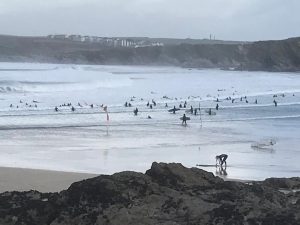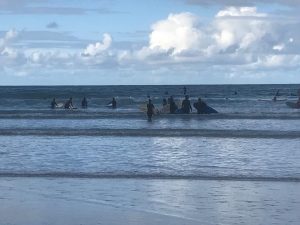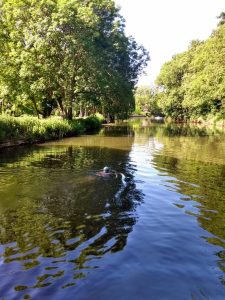
June 4, 2020, by lzzeb
Engaging with ‘lay’ and ‘expert’ perspectives about the emerging environmental dimensions of antimicrobial resistance
A blog by PGR student, Anthony Shenton
According to the World Health Organisation, antimicrobial resistance (AMR) is one of the most important challenges that we face with an estimated 700,000 deaths related to AMR occurring every year that could rise to 10 million every year by 2050. Although AMR is a term that is used to describe bacteria, fungi and viruses becoming resistant to antibacterials, antivirals and antifungals, scientists and policymakers have focused mainly on the overuse and misuse of antibiotics in human health and animal agriculture. However, the environment is also emerging as an important issue for those who concerned about AMR. The main aim of my research is to engage with scientific experts, AMR policy documents and ‘lay’ publics in order to understand what impact sociology of science debates have had on the environmental dimensions of AMR.
Antibiotics and their residues enter the environment via waste that is excreted into the environment by humans and animals. Waste that is released into local rivers during the manufacturing process of antibiotics, that often takes place in China and India, also selects for drug-resistant bacteria. It is claimed that the communities that regularly wash in those rivers are the most at risk of contracting infections that have become resistant to antibiotics. Engaging with those communities about antibiotic pollution is beyond the scope of my PhD research project. However, last October I travelled to Newquay so that I could carry out semi-structured interviews with surfers because it was recently discovered by researchers at the University of Exeter that they are three times more likely to have antibiotic resistant bacteria in their guts than non-surfers. I have also been interviewing scientists and outdoor swimmers about these issues but due to lockdown restrictions, most of them have been via video and phone calls.
Exploring how ‘expert’ and ‘lay’ publics make sense of and engage with the environmental dimensions of AMR has been strongly influenced by social science research on the ‘deficit model’ of the public understanding of science that has often been employed by ‘experts’ when they engage with ‘the public’ about social and environmental issues. That is to say, the didactic transfer of knowledge is perceived to be the best way to tackle the public’s lack of understanding about a particular issue. However, when it is removed from its local context and applied to the messiness of the ‘real world’ science can often come into conflict with ‘lay’ publics’ pre-existing knowledge that has been gained through practical experience rather than formal education. Those who reject the ‘deficit model’ argue that when it comes to defining and tackling environmental problems ‘lay’ publics should be involved at an early stage because decisions will be improved, and more trust will be established. Understanding these debates in relation to the emerging environmental dimensions of AMR could shine a light on how successful AMR action plans are likely to be when put into practice.
No comments yet, fill out a comment to be the first




Leave a Reply